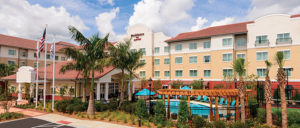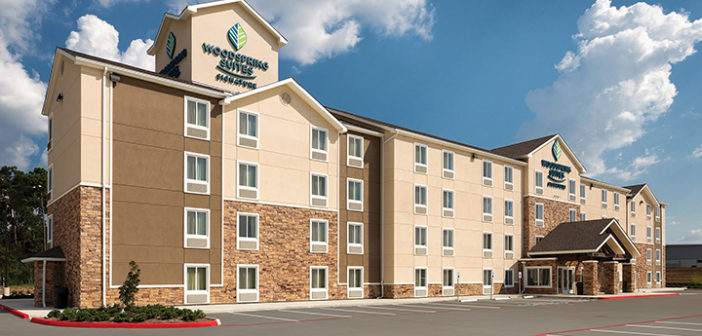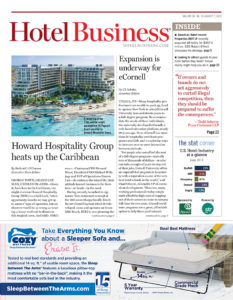NEW YORK—More than a decade ago, extended-stay was dubbed “the most important development to impact the hotel business in the last 25 years” in response to a poll during the New York University International Hospitality Industry Investment Conference.
The segment has remained appealing—and largely profitable—as a business model, having often been characterized as “recession proof” or “shield-wrapped” against economic vicissitudes that impact the industry. While not as steadfast in that regard as it might once have been, developers continue to embrace the segment, as do owners and operators.
The segment traditionally has been delineated along upper-, mid- and lower-tier lines. According to Lodging Econometrics (LE), brands such as Residence Inn, Staybridge Suites and Homewood Suites by Hilton occupy the top tier, with Candlewood Suites, Home2 Suites and TownePlace Suites by Marriott examples at mid-level; Suburban Extended Stay, WoodSpring Suites and ESA are representative of the economy end.
In data released at press time for Summer 2017 from LE, extended-stay hotel projects represent approximately a fourth of all U.S. hotels under construction. Of the U.S. total of 1,511 projects (197,450 rooms), there are 384 extended-stay projects representing 43,314 rooms.
The LE statistics show continuing robust growth for the segment, with extended-stay hotel openings almost doubling in number over four years. Tracking the advancement, LE data shows 186 hotels open (19,807 rooms) in 2015; 224 open (24,196 rooms) in 2016; 266 projects (29,179 rooms) forecast to open in 2017; and 332 projects (35,640 rooms) forecast to open in 2018.
”Developer interest in extended-stay brands remains robust,” Bruce Ford, LE’s SVP/director of global business development, told Hotel Business. “Urban development and dual-branded projects have enhanced the project counts for these brands.”
According to Ron Burgett, EVP of franchise development and operations for WoodSpring Hotels, 2016 was a near record year from both an operations and development perspective, and the chain, which includes WoodSpring Suites, is on track to achieve similar results this year. “Our intention is to sign more than 35 new franchise deals each year and to complement that growth with another 10-plus corporate locations,” he said.
Last month, the company partnered with commercial real estate firm Holladay Properties to develop a four-story, 123-suite WoodSpring Suites in Tinley Park, IL. The under-construction project, the third WoodSpring hotel for Holladay in Illinois, is slated to open next February.
Burgett noted the chain is very strategic in doing deals. “The distribution strategy is very critical in the extended-stay segment as our brand has specific demand generators and we require a certain expectation on ROI,” he said.

The 116-key Residence Inn Fort Myers Gulf Coast Town Center is part of McKibbon Hospitality’s extended-stay portfolio.
At development/management firm McKibbon Hospitality, which owns several extended-stay properties, including Homewood Suites by Hilton and Residence Inn by Marriott, and manages others, Bruce Baerwalde, EVP of operations, said when considering a new extended-stay development, “it’s not necessarily about what flag is available. McKibbon operates its extended-stay portfolio with a focus on driving RevPAR through a strategic customer base. Our market study during the due-diligence process is centered on identifying the top extended-stay demand generators.”
Baerwalde said that extended-stay represents approximately 50% of McKibbon’s portfolio, with a regional focus for these properties in the Southeast. “We’re seeing the most activity in primary markets, but there has also been some uptick in secondary markets,” he noted.
In a reverse dynamic, Burgett said, “Traditionally, WoodSpring hotels do well in secondary markets and we continue to see strong growth in those areas (it recently opened a franchised property in Cherry Hill, NJ). However, we’ve been very fortunate to add very high-quality properties in markets like Seattle, Miami, New York and Dallas.”
With 228 hotels nationwide, Burgett felt the new-construction brand still has “a lot of room to grow” and the chain is focusing on the top 50 MSAs in the United States.
“We look at three/four factors when determining the ‘right’ deal,” noted Burgett. These include location, with the right revenue generators in the area that fit the extended-stay product; open territory devoid of any impact issues in the area where WoodSpring is looking to expand; the ability to get the right rate; and the strength of the franchise partner in those types of agreements.
WoodSpring Hotels currently owns almost 50% of its open properties. “Our intention is to continue to heavily invest into the WoodSpring brand by adding several corporate properties each year,” said Burgett. “Financing hasn’t been an issue as we continue to see a strong return on both franchise and corporate locations.”
The executives acknowledged there are some challenges in playing in the extended-stay arena.
“We must be very specific in the markets we choose to build in because the extended-stay hotel is not right in every market,” said Burgett. “It’s very important that our franchise partners continue to work closely with our development team to help ensure ongoing success.”
“Any decline in the extended-stay base makes it difficult to deliver on profit goals because operational costs increase,” said Baerwalde, adding despite any challenges, McKibbon expects to continue to play a major role in the extended-stay market in the years ahead.
“As a developer, new brands will afford us the opportunity to create targeted, strategic development projects. As an operator, maintaining strong relationships in markets with a growing supply of extended-stay properties will be critical.” HB


